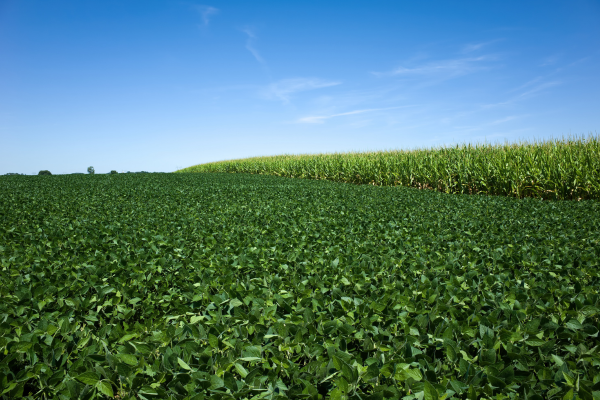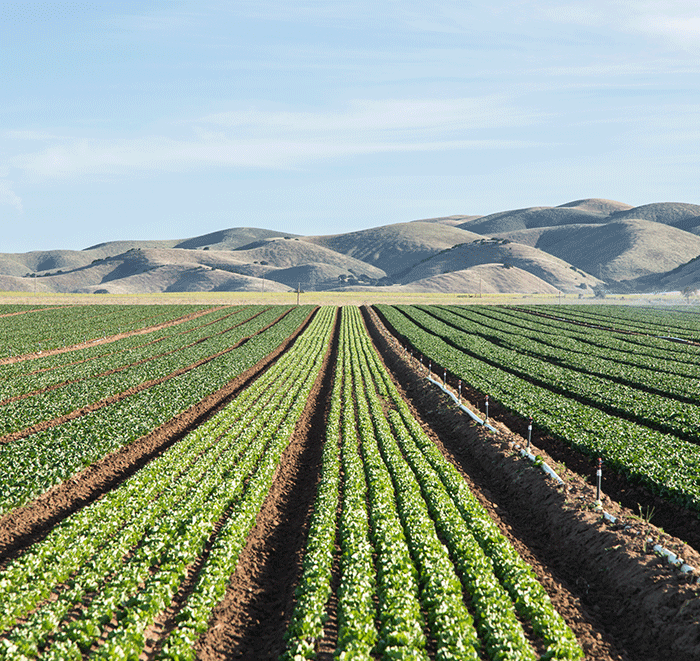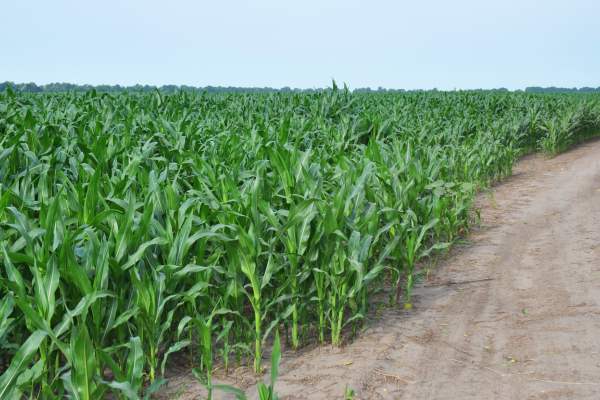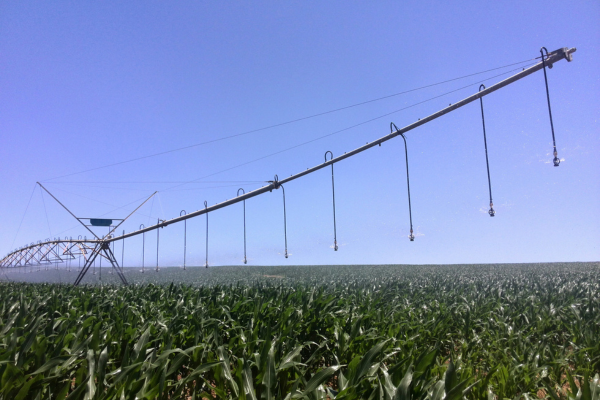
Crop Development Update – 6/29/2023
Corn Plant Development: V8 – V12 Stages
(Vn (vegetative stages) based on visible leaf collars)
V8 – V9
- Period of rapid growth as new “V” stage is occurring about every 3 days
- All leaves have been formed but most are still hidden in the whorl
- Plant begins to lose lower leaves
- Ear shoots visible behind leaf sheaths
- Unrestricted root growth should measure about 18” deep x 15” wide, should have side-dress applications completed by now to avoid root pruning
- Moisture and nutrient demands increasing rapidly
V12
- Determination of the number of kernels per row is in progress and will continue through about V17. (Remember, the number of kernel rows was established by V6).
- Rapid stalk growth is occurring through internode elongation
- New “V” stages occur every 2-3 days
- Nodal root system expanding quickly
- Cumulative nutrient uptake by this stage has reached 30%, 20%, and 30% of the total N, P, and K, respectively which the plant will ultimately use.
- Water use may reach about 0.20” per day
- Lack of nutrients, moisture stress, or crop injury due to weather events, insect or mechanical damage can seriously reduce the potential number of kernels
CORN DEVELOPMENT
Development has slowly progressed towards the reproductive stages, with the earliest planted corn beginning to tassel. Environmental stress, especially moisture and heat stress, can cause poor pollination and seed set. How much? This is all dependent on your local conditions. Yield losses of 3 to 8% can occur each day from drought-like conditions when the soil moisture profile at root depth is below 35-40% during the two weeks before and two weeks following silk emergence. A reduced number of kernels can occur due to failure of silk emergence, failure of emerged silks to pollinate, or kernel abortion. Although silks normally pollinate within a day of being exposed, they remain receptive for 6 to 7 days after emerging from husks. The plant continues to adjust seed production for the environment through kernel size. Under stress during grain fill, kernel numbers per ear are adjusted first, completely filling some ears rather than partially filling all kernels. Kernel size is adjusted last. Kernels at the tip are pollinated last, which is why they are smaller than those at the base.
| Growth Stage | Inches Water Use/Day |
|---|---|
| 1 – 4 leaf | .02 – .05 |
| 5 – 8 leaf | .05 – .10 |
| 8 – 10 leaf | .10 – .15 |
| 11 – 14 leaf | .15 – .20 |
| 14 – 18 leaf | .20 – .25 |
| 19 leaf – blister | .25 – .30 |
| Milk -soft dough | .20 – .25 |
| Hard dough – early dent | .15 – .20 |
| Mid – full dent | .10 – .15 |
| Maturation | .05 – .10 |
Water use in corn is still at its highest use rate in/around pollination. When irrigating, we begin to think of how much water is needed and when. It has been hard to keep up this year, with many producers currently at or above their normal yearly irrigation totals. At our current corn growth stage, the root zone of the earliest planted corn is 3-4 feet deep, and we can predict how much water the crop uses through the following table. We still need quite a bit of water.
| Stage of Growth Maturity | Approx. Days to Maturity | Average Water Use |
|---|---|---|
| Blister Kernel | 45 | 10.5 in |
| Dough | 34 | 7.5 in |
| Beginning Dent | 24 | 5.0 in |
| Full Dent | 13 | 2.5 in |
| Maturity (Black Layer) | 0 | 0 |
Example: If your soil type holds 1.5 inches of water per foot, there are 8 inches of water in the 4-foot crop root zone. Research conducted through the university shows that soil moisture levels can be reduced up to 40% per foot of soil and not reduce grain yield. If the root zone was full of water, the crop could pull out 4.8 inches of water (8 inches x 60%) before the crop would show signs of stress. If the crop was between the dough and the beginning of the dent stage, you would not need to irrigate.
SOYBEAN DEVELOPMENT
Development has progressed to R1—bloom Initiation. Soybean flowering is triggered by a photoperiod and usually starts in some form on and around the first day of summer, June 21st. Even though we talk a lot about soybeans using most of their annual water requirement needs in August, some soil water is needed to provide the plant structure needed for proper flowering and pod set.
In review, the total water use by a soybean crop (evaporation plus transpiration) is 21 to 24 inches per year. About 65 percent of this water is used during the reproductive stages. The peak water use rate, about 0.3 inches per day, occurs during pod development. The average rate during the reproductive stages is about 0.25 inches per day. The most important times for soybean plants to have adequate available water are during pod development (R3-R4) and seed fill (R5-R6). Soybeans use between 10 and 11 inches of water from full flower (R2) to beginning maturity (R7). Therefore, effective irrigation plus rainfall should equal about 3 inches during full flower (R2), 3 inches during pod development (R3-R4), and 4.5 inches during seed fill (R5-R6).*(courtesy Elmore, R.W., D.E. Eisenhauer, J.E. Specht, and J.H. Williams. 1988.) Long story short, a couple of good 1-2 inch rains in August normally provide the biggest benefit for soybean yield potentials.
| Growth Stage | Inches Water Use/Day |
|---|---|
| Germination/Emergence | .1 – .15 |
| Vegetative Growth | .15 – .20 |
| Flowering | .25 – .30 |
| Pod Development | .20 – .25 |
| Seed Fill | .15 – .20 |
| Maturation | .05 – .10 |
Dr. John McNamara // Wilbur-Ellis Agronomist



